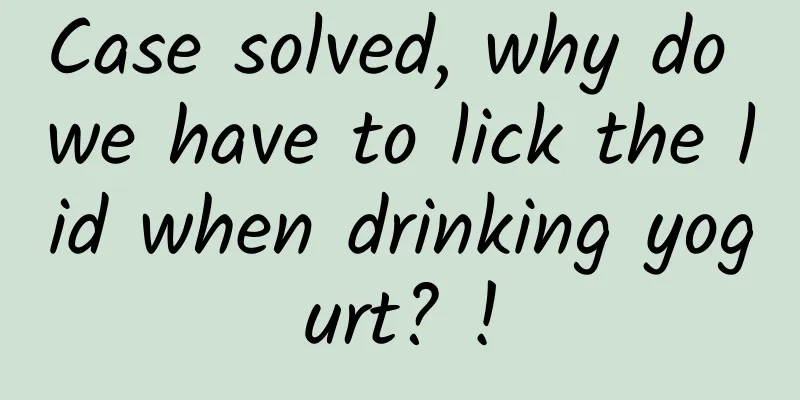Attention! Do not put these two types of fruits together in the refrigerator! Because...

|
Many people must have heard of the story "A horse gallops across the sky, and the concubine smiles. No one knows that it is lychees coming." During the Tang Dynasty, Yang Guifei loved to eat lychees, but at that time they could only send people to deliver them from the south at full speed. With the development of logistics, we can now eat fruits and vegetables from all over the world almost anytime and anywhere. In the north, we can also eat various tropical fruits and vegetables such as lychees and mangoes. However, as the fruits and vegetables we can buy become more and more abundant, how to preserve them has become a concern for many people. Recently, there has been a hot search on the Internet indicating that not all ingredients are suitable for being stored in the refrigerator . In addition, it is often said that tropical fruits grow in the tropics, so they are more afraid of cold, cannot be stored in the refrigerator, are prone to cold damage , and are best stored outdoors. So are these claims true? Too long to read 1. For home storage, it is best to store fruits and vegetables in the refrigerator; 2. Do not store fruits and vegetables in the refrigerator for more than a week; 3. When eating, eat the fruits and vegetables that were put into the refrigerator first; 4. Separate ethylene-producing fruits and vegetables from ethylene-sensitive fruits and vegetables, as shown in the figure below; 5. Eat fruits and vegetables that are susceptible to chilling first, such as cucumbers (at 2°C, about 9 days) and ripe bananas (at 7.2°C, 6 to 12 days); 6. If the fruits and vegetables you buy are not ripe, such as bananas, mangoes, avocados, papayas, kiwis, plums, apricots, peaches, tomatoes, etc., it is best to leave them outdoors for 1 to 2 days and eat them as soon as they are ripe. If you cannot finish them, you still need to put them in the refrigerator as soon as possible. What exactly is cold damage? Chilling injury refers to the damage caused to some cold-sensitive plants in a low temperature environment above the freezing point of the tissue, which is mainly manifested as wrinkling, denting, lignification of the fruit skin, browning of the flesh, etc. Chilling injury can cause damage to the internal structure of fruits and vegetables, loss of nutrients, reduction of disease resistance and storage resistance, etc., which in turn leads to deterioration and rot of fruits and vegetables. Citrus fruits suffering from chilling injury. Image source: DOI:10.1201/b22001-17 Chilling damage to fruits and vegetables is very complex and is related to variety, origin, storage temperature, maturity of fruits and vegetables, temperature and humidity of the storage environment, gas composition, etc. In the commercial storage of fruits and vegetables, there are corresponding temperature, humidity and other processing requirements for fruits of different origins, times and maturity. Generally speaking, fruits and vegetables originating from tropical or subtropical areas are more sensitive to low temperatures and are more likely to suffer chilling damage in a low-temperature environment without freezing . For example, most tropical fruits and vegetables, such as bananas, mangoes, lychees, longans, cucumbers, green peppers, etc., may suffer chilling damage during low-temperature storage and transportation. This is why some people often say that tropical fruits should not be refrigerated as much as possible. According to relevant statistics, the loss caused by low temperature and cold damage accounts for about 30% of the total storage and transportation volume of fruits and vegetables sold in my country, causing great waste and loss. Therefore, the storage and transportation of fruits and vegetables after harvest has always been a key research area. Can't it be refrigerated? People often say online that tropical fruits should not be kept in the refrigerator because they are prone to cold damage. Is this true? In fact, for ordinary families, there is no need to worry too much. Putting it directly in the refrigerator is still the best, most practical and most convenient choice . First, chilling damage to fruits and vegetables usually occurs in a long-term low-temperature storage environment. For example, common fruits and vegetables may take more than 7 days or even dozens of days to be chilled . Chilling damage mainly occurs in commercial storage. It should be noted that commercial fruit and vegetables are often stored for several months or even more than a year . For ordinary households, it usually only takes about a week, or half a month at most, so there is usually no need to worry too much about cold damage. Common chilling injury time for fruits and vegetables Longan: Chilling damage occurred on the 14th day of storage. Litchi: At 1°C, chilling damage will occur in 20 days, but the good fruit rate is 90%; at 5°C, chilling damage will occur in 30 days of storage; there is also a study that compared 5 varieties of lychees stored at different low temperatures, and the results found that at 1~5°C, the shortest storage period is about 25 days. Hami melon: The situation of different varieties was different. "Karakusai" suffered chilling injury after being stored at 0~2℃ for 40~50 days. "86-1" Hami melon fruits were stored at 1℃ for 14 days and then moved to room temperature for 3 days, and small light brown spots appeared on the skin; Hami melon fruits stored at 3℃ showed slight chilling injury symptoms after 42 days, but no waterlogging was found. Mango: Kent mangoes will show symptoms of chilling injury when stored at 13℃ for 10 days; Purple flower mangoes will show chilling injury when stored at 2℃ for 15 days and at 5℃ for 34 days, but no chilling injury will occur when stored at 8℃ for 34 days. Sweet potato: The time it takes for sweet potato to be damaged by cold is about 9 days when stored at 1°C, and the critical point of damage to sweet potato when stored at 4°C is about 45 days. Green peppers: Chilling damage occurred after being stored at 2°C for one week, with a few tiny sunken spots appearing on some fruits. Nectarines: Chilling damage can be induced at 3℃, 5℃ and 7℃, of which 5℃ is the most sensitive to cold, followed by 3℃ and 7℃ is the least sensitive. The storage period at 1℃ can be about 40 days. Guangdong sweet orange: When stored at 1-3°C for 4-5 months, the brown spots due to low temperature damage are much lighter than those when stored at an intermediate temperature (7-9°C). Cucumbers: After being stored at 0℃ for 3 days, chilling injury symptoms such as sunken spots or water-soaked spots of varying sizes will appear on the surface of the cucumbers. However, at 2℃, only minor chilling injury symptoms will appear after about 9 days. Bananas: Unripe bananas may suffer chilling damage after being stored for a few hours. For example, a study found that freshly harvested Lagadan bananas began to show chilling damage after being stored at 1.1°C for 2 hours, and showed chilling damage symptoms after being stored at 7.2°C for 4 hours; but after ripening, moderate chilling damage symptoms appeared after being stored for 6 to 12 days. Second, compared to keeping it at room temperature, low-temperature storage still has great advantages, especially short-term storage. Compared with room temperature, especially in the hot summer, low-temperature freezing can significantly reduce the respiration intensity of fruits and vegetables after harvest, reduce nutrient loss, and inhibit the activity of pathogenic microorganisms . Rather than leaving them outdoors without a refrigerator, where they have to fight insects and bacteria, refrigeration is obviously better and can extend the shelf life of fruits and vegetables. In fact, the U.S. Department of Agriculture advises consumers that only a few fruits and vegetables can be kept at room temperature, and most fruits and vegetables should be kept in the refrigerator. Ideally, when storing them in the refrigerator, pay attention to the location and keep ethylene-producing fruits and vegetables away from ethylene-sensitive fruits and vegetables . How to use the refrigerator scientifically? Here are 5 tips for storing fruits and vegetables in the refrigerator. 1 It is best not to refrigerate fruits and vegetables for more than a week. If conditions permit, fresh fruits and vegetables are of course the best, they taste good and are nutritious. But now everyone has to go to work, and it may not be practical to buy fresh fruits and vegetables every day. However, I suggest that if there are no special circumstances, try not to keep fruits and vegetables in the refrigerator for more than a week . Go to the supermarket or vegetable market once a week to update the vegetables and fruits in the refrigerator. Generally speaking, most fruits and vegetables will not suffer from cold damage within a week. 2 Pay attention to the order when eating, eat what is put into the refrigerator first Every time you buy fruits and vegetables, you might as well keep a note of the time and eat the ones that were put in first first . This will ensure that the food in the refrigerator can be updated smoothly and some fruits and vegetables will not be kept for too long. 3 Fruit and vegetable classification It is recommended to keep ethylene-producing fruits and vegetables separate from those that are sensitive to ethylene . In addition, cucumbers, oranges, tomatoes and other common fruits and vegetables that are prone to cold damage are also recommended to be placed in the refrigerator. Image compiled from the U.S. Department of Agriculture 4 Eat fruits and vegetables that are susceptible to cold first For fruits and vegetables that are prone to cold damage, such as cucumbers, compared with other fruits and vegetables, they should be eaten as soon as possible and given priority. 5 How to store unripe fruits and vegetables when you buy them home The fruits and vegetables you buy home, such as tropical fruits such as bananas, mangoes, avocados, and papayas; non-tropical fruits such as kiwis, plums, apricots, peaches, etc.; vegetables such as tomatoes, etc., if they are not ripe, it is best to leave them outdoors for 1 to 2 days and eat them as soon as possible after they are ripe; if you cannot finish them, you still need to refrigerate them as soon as possible. References [1] Yan Xiaoxia, Kang Ningbo, Lu Ling, et al. Research progress on postharvest chilling injury and regulation technology of fruits and vegetables[J]. Food and Fermentation Industries, 2023, 49(08): 325-334. DOI: 10.13995/j.cnki.11-1802/ts.032303. [2] The Commercial Storage of Fruits, Vegetables, and Florist and Nursery Stocks.United States Department of Agriculture.Agriculture Handbook Number 66 [3] Zhou Yun, Ji Zuoliang, Lin Weizhen. Study on the optimal storage temperature and chilling injury of longan[J]. Acta Horticulturae Sinica. 1997. 24(1): 13-18. [4] Huang Xiaoyu, Kang Demei, Ji Zuoliang. Optimal storage temperature and chilling injury of litchi fruit[J]. Journal of South China Agricultural University, 1990(03):13-18. [5] HU Weirong. Study on chilling injury physiology and ice storage technology of litchi (Litchi chinensis Sonn.) fruit[D]. South China Agricultural University, 2003. [6] Zhang Ting. Study on the characteristics and control of post-harvest chilling injury of different varieties of Hami melon[D]. Northwest Agriculture and Forestry University, 2017. [7] Lu Wangjin, Zhang Zhaoqi, Ji Zuoliang. Chilling damage and cold protection technology of tropical and subtropical fruits and vegetables during low temperature storage[J]. Plant Physiology Communications, 1999(02):158-163.DOI:10.13592/j.cnki.ppj.1999.02.023. [8] Wang Wei, Huang Kaihong, Liu Chunquan, et al. Effects of different storage temperatures on the commercial quality of sweet potatoes[J]. Jiangsu Agricultural Sciences, 2012, 40(03): 233-235. DOI: 10.15889/j.issn.1002-1302.2012.03.098. [9] Hou Jianshe, Xi Yufang, Li Zhonghua, et al. Study on the relationship between chilling injury and induced chilling resistance and oxidative stress in green pepper fruit[J]. Food Science, 2005, 244(26): 244-248. [10] GAO Hui. Study on chilling injury and physiological mechanism of chilling injury in nectarine fruit[D]. Northwest Agriculture and Forestry University, 2007. [11] Zhang Dandan, Qu Hongxia, Duan Xuewu, et al. Research progress on postharvest chilling injury of tropical fruits and vegetables[J]. Journal of Tropical Crops, 2020, 41(10): 2062-2079. [12] Kou Xiaohong, Li Ling, Han Na, et al. Study on the mechanism of heat treatment to alleviate chilling injury of cucumber[J]. Food Industry Science and Technology, 2006, 27(11): 164-166 [13] Qian Chunlu. Study on the relationship between cucumber fruit maturity and cold tolerance and its physiological mechanism[D]. Zhejiang University, 2012. [14] Qian, Shen, C.S., Lin, Q.F., et al. Research progress on the occurrence and control technology of chilling injury in postharvest banana fruit[J]. Journal of Fruit Science, 2021, 38(05): 817-827. DOI: 10.13925/j.cnki.gsxb.20200500. Planning and production Author: Ruan Guangfeng, Deputy Director of Kexin Food and Health Information Exchange Center Audit丨Gu Chuanling Director of Capital Health Nutrition and Gourmet Society Registered Nutritionist Dietetics Expert of Public Security Border Defense Force Planning丨Cui Yinghao Editor: Cui Yinghao Some of the pictures in this article are from the copyright library Reprinting may lead to copyright disputes |
<<: What should we do to prevent the “Lost Gull” from being lost again?
>>: The autumn heat is coming, how can we maintain good health in one step?
Recommend
Wearing pajamas VS sleeping naked, which is healthier? The truth is surprising
What is the happiest thing in a day? Of course it...
Mustard VS pepper, why is the spiciness of mustard more addictive?
This article was reviewed by Dr. Tao Ning, Associ...
The vast mountains and rivers and the hustle and bustle of human life: Where does Sichuan come from?
Sichuan Diverse landscapes and colorful cultures ...
What big news did Microsoft make yesterday?
Yesterday was a very special day for people like ...
20 iron rules for offline marketing!
Over the years of work, I have worked on many pro...
11 cases to teach you how to operate a community!
Community is an area that almost all Internet pro...
Jia Yueting counts to "3" and LeTV's "super phone" is ready to be released
January 7 (Reporter Zhang Xiaodong) A company tha...
These four ways of feed flow advertising can turn your readers from being "raped" to "enjoying"
The trend of the mobile Internet era is irreversi...
This "activated carbon sponge" can directly "grab" carbon dioxide in the air
Produced by: Science Popularization China Author:...
Danger! Mobile phone chargers can actually cause fires!
Mobile phones, as a necessity that we cannot live...
Electric Technology Car News: Giving up 7 seats to attract young people, Vision X1 is only priced at 40,000 yuan, which beats Baojun 310 in seconds
SUV, automatic transmission, cruise control, pano...
In 2020, the marketing strategy of mid-level KOLs will be fully upgraded
KOL is a hot new star that has emerged in recent ...
Android founder Rubin leaves Google to focus on business incubator
Former Android head Andy Rubin is reportedly leav...
How to use the 4 key points of the addiction model to design a community with high conversion rates?
Recently, I read a book called "Addiction&qu...









